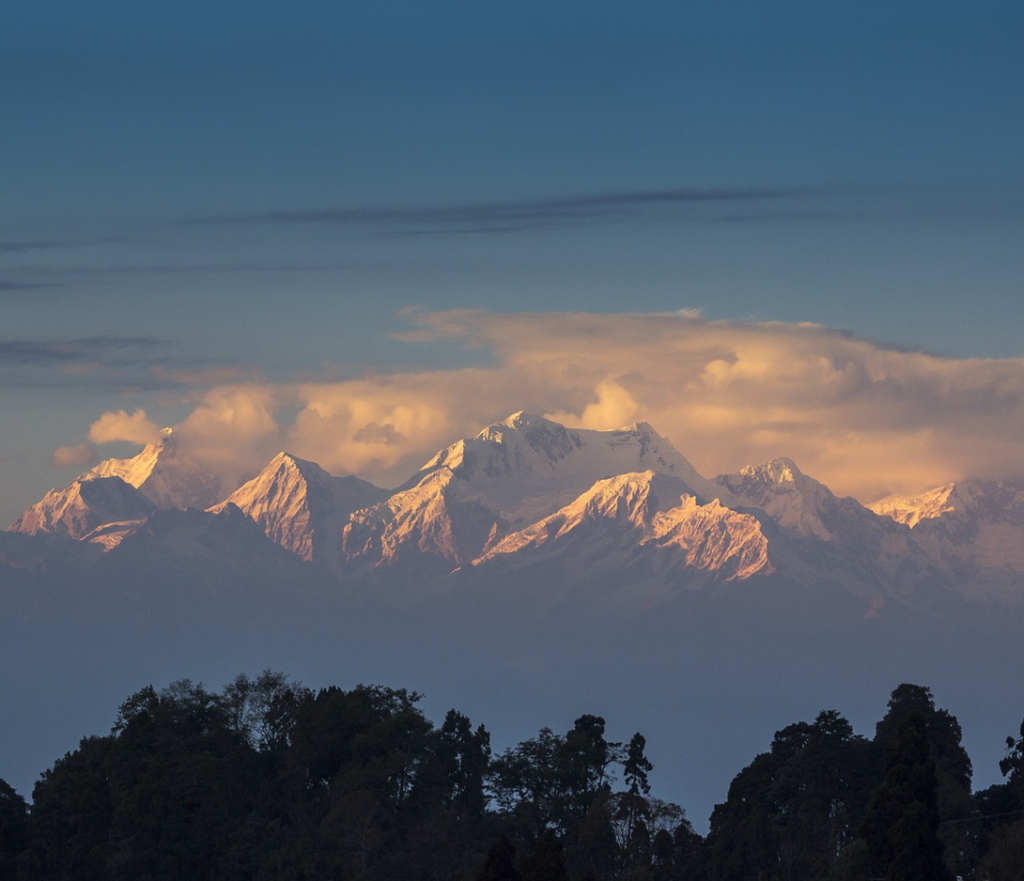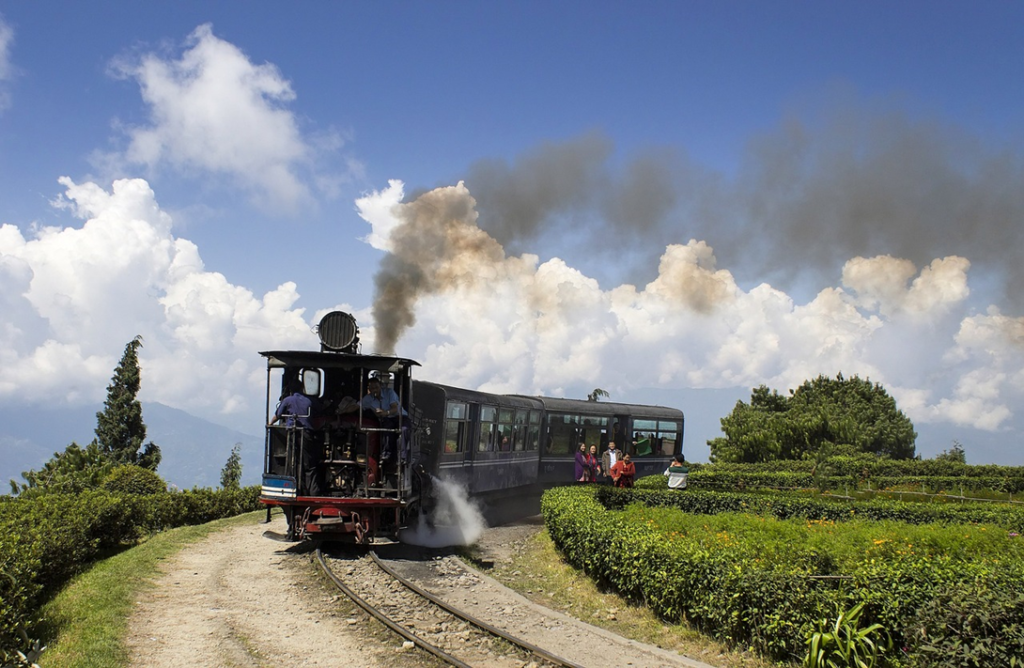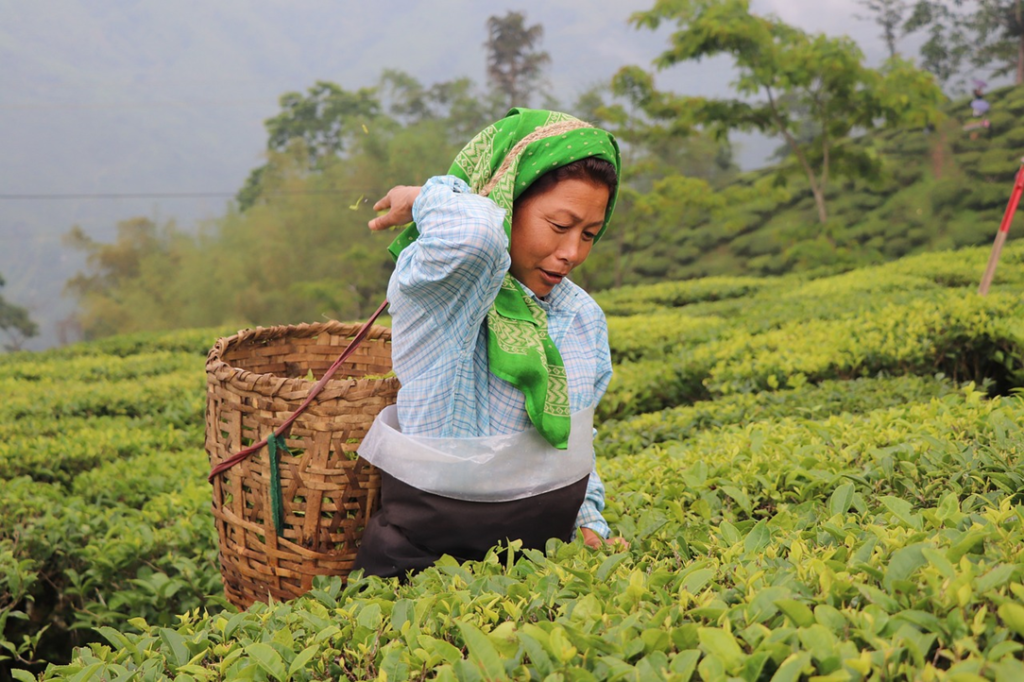
Nestled like a precious gem in the embrace of the Eastern Himalayas, the charming town of Darjeeling: A Himalayan Gem gracefully unfurls itself amidst the undulating, emerald-hued hills. Here, nature’s artistic prowess is on full display, casting a spell that seems to merge the boundaries between reality and a dreamscape. It is a place where every element of the landscape seems to be a brushstroke in the grand masterpiece of creation, a true testament to the symphony of beauty orchestrated by the hands of nature itself. Moreover, Darjeeling’s allure goes beyond its scenic splendor; it embodies the harmony between the ingenuity of mankind and the generosity of nature.
Renowned far and wide for its landscapes that seem to have sprung from the canvas of an artist’s imagination, Darjeeling beckons with a promise of unending beauty. These landscapes are not mere static scenes; they are living, breathing entities that change with the rhythm of the seasons. Verdant tea gardens, meticulously terraced over the hillsides, create a soothing tapestry that blends seamlessly with the surrounding wilderness. These meticulously manicured gardens, where every tea leaf is a testament to generations of care, lend Darjeeling its reputation as the “Queen of Tea.” The artistry in cultivation is matched only by the art of plucking, processing, and brewing the tea that has become synonymous with the town’s identity.
A Glimpse into Darjeeling’s History
Darjeeling’s history is as intriguing as its mist-covered mountains. Originally inhabited by the indigenous Lepcha community, the region fell under British colonial rule in the mid-19th century. The British recognized Darjeeling’s potential as a summer retreat to escape the scorching Indian plains, and thus began its transformation into a hill station. Today, remnants of the colonial era, including charming architecture and the Darjeeling Himalayan Railway, still grace the town, offering a window into its past.
The Enchanting Darjeeling Himalayan Railway

Immerse yourself in a journey that transcends time and transports you to an era where steam locomotives ruled the tracks and every chug of the engine was a symphony of mechanical harmony. The Darjeeling Himalayan Railway, a revered UNESCO World Heritage Site, is a remarkable testament to human engineering and a nostalgic voyage through Darjeeling’s idyllic landscapes.
Affectionately christened the “Toy Train,” this diminutive wonder defies its size, making an indelible mark on both the landscape and the hearts of those who embark on its quaint carriages. This miniature marvel takes travelers on an enchanting odyssey, meandering through the town’s narrow streets and verdant vistas. It’s a living example of the adage that great things come in small packages.
The true allure of the Darjeeling Himalayan Railway lies not merely in its functionality but in its vintage charm that invokes a sense of timelessness. Its narrow-gauge track, harkening back to an era long past, weaves its way through the heart of Darjeeling, and its century-old steam locomotives breathe life into a bygone epoch. The rhythmic clanking of wheels against rails, the hiss of steam, and the gentle sway of the carriages all contribute to a symphony of sensations that awaken a nostalgia one might not even realize they possess.
As the Toy Train embarks on its leisurely journey, it treats passengers to a visual feast that is nothing short of magical. Through the large windows, one is greeted with panoramic views that seem plucked from a fairytale: emerald-hued tea gardens stretch to the horizon, their rows seeming to ripple like waves under the train’s gentle passage. Verdant forests stand like silent sentinels, whispering tales of ancient trees and elusive creatures that call these woods home. And then, there it is – the crowning jewel of the landscape – the majestic Kanchenjunga, its snow-capped peak seeming almost within arm’s reach, a sight that inspires both awe and reverence.
The journey is not merely a physical one; it’s a transcendental experience that ignites the senses and sparks the imagination. It’s a dialogue between man’s ingenuity and nature’s grandeur, a dance between the mechanical and the organic, the past and the present. As the train chugs along its carefully laid tracks, it’s as though time itself pauses, allowing passengers to embrace a fleeting moment of simplicity and beauty.
In a world that hurtles forward at breakneck speed, the Darjeeling Himalayan Railway stands as a living testament to a gentler time. It invites you to disconnect from the chaos of modernity and embrace the unhurried pace of yesteryears. The Toy Train isn’t merely a mode of transportation; it’s a vessel of dreams, a portal to a world where the journey is as enchanting as the destination, a reminder that sometimes the most meaningful experiences come from embracing the past while journeying into the future.
Kanchenjunga: The Third Highest Peak in the World
Imagine standing on the threshold of the world, gazing up at a majestic peak that pierces the heavens themselves. Such is the awe-inspiring spectacle that is Kanchenjunga, the third highest mountain on our planet, and a towering sentinel that bestows an aura of grandeur upon the town of Darjeeling.
Like an ancient guardian, Kanchenjunga watches over Darjeeling, its colossal presence etching an indelible mark on the very fabric of the town’s identity. Its lofty stature serves as an enduring testament to the unyielding might of the Himalayas, reminding all who cast their eyes upon it of the Earth’s extraordinary geological prowess. Standing in the shadow of this monumental peak, one can’t help but feel a profound sense of humility in the face of nature’s grand design.
Kanchenjunga’s towering eminence is more than a mere geological feature; it is a living canvas that the sun lovingly paints with an ever-changing palette of hues. During the ethereal moments of sunrise and sunset, the mountain’s visage transforms into a masterpiece of light and shadow. The first rays of dawn delicately caress its snow-covered crown, casting a soft, golden glow that gradually intensifies, as if the mountain itself is awakening from a slumber. As the sun bids adieu to the day, Kanchenjunga’s slopes are bathed in hues of pink, orange, and purple, creating a celestial panorama that words can scarcely describe.
The Aromatic Symphony of Darjeeling Tea

The very hills that cradle Darjeeling in their embrace are adorned with a verdant tapestry of tea gardens, forming a living canvas that produces some of the world’s most exquisite and sought-after tea varieties. These meticulously manicured terraced gardens are not just a visual spectacle; they are a labor of love, a testament to the harmonious collaboration between human ingenuity and nature’s bounties.
A pilgrimage to a Darjeeling tea estate is a journey into the heart of a centuries-old tradition, a tradition that transforms the vibrant green leaves of the Camellia sinensis plant into the aromatic elixir that has enchanted generations. Here, amidst the rustling leaves and the sweet-scented air, one can bear witness to the alchemical process that gives birth to Darjeeling tea’s unmatched charm.
The journey begins with the gentle plucking of tea leaves, a delicate art that requires both skill and precision. As nimble fingers work in harmony with the rhythm of nature, the leaves are gathered and set on a path of transformation. Withering is the first step, a dance with the elements that gently reduces the moisture content and kickstarts the intricate biochemical reactions that define the tea’s flavor profile.
Next, the leaves are coaxed into rolling, a process that awakens their innate potential and sets in motion the dance of aromas and flavors that will soon grace the teacup. Fermentation, a delicate interplay of time and controlled conditions, imparts depth and character, lending each tea its unique personality. The final step, drying, is a gentle caress of warmth that seals the tea’s essence, preserving the symphony of flavors for the connoisseur’s delight.
Rich Cultural Tapestry
Darjeeling’s allure is not confined to its breathtaking landscapes alone; it extends its embrace to a vibrant cultural tapestry that weaves together a kaleidoscope of traditions, histories, and influences. This town, perched amidst the hills, is not merely a place; it is a living testament to the harmonious coexistence of diverse ethnicities, each contributing their own vibrant hues to the canvas of Darjeeling’s identity.
As you wander through the town’s bustling streets, you’ll find yourself immersed in a symphony of languages, customs, and lifestyles that seamlessly blend together. The streets are alive with the echoes of laughter, the aromas of diverse cuisines, and the vivid colors of traditional attire. The Lepcha, Nepali, Tibetan, and British communities have all played their part in shaping the town’s cultural mosaic, a mosaic that stands as a remarkable example of unity amidst diversity.
A poignant chapter in this cultural tapestry is the Tibetan Refugee Self-Help Center, a testament to the town’s compassionate heart. Established in the wake of the Tibetan diaspora, this center not only offers refuge but also narrates a tale of resilience and hope. Here, you can witness the intricate dance of fingers as skilled artisans transform raw materials into exquisite handicrafts, keeping alive age-old traditions that have been passed down through generations. The center stands not only as a museum of tangible art but as a living testament to the indomitable spirit of a community that has faced upheaval with grace and fortitude.
Darjeeling’s spiritual ambiance is equally captivating, inviting seekers and pilgrims to explore its sacred spaces. The Ghoom Monastery, nestled atop misty hills, is a sanctuary of tranquility, its aura of serenity punctuated only by the echoes of monks’ chants. Here, one can find solace amidst the intricate murals, prayer flags that flutter like multicolored whispers, and the scent of incense that infuses the air with a sense of sacredness.
Trekking and Adventure Opportunities
For the intrepid explorer, Darjeeling offers an array of trekking routes that cater to different skill levels. From the picturesque Darjeeling Singalila Ridge Trek to the challenging Sandakphu Trek, these trails provide an up-close encounter with the region’s flora, fauna, and local culture. Trekkers often find themselves traversing through dense forests, quaint villages, and high-altitude meadows, all while being treated to panoramic views of the surrounding peaks.
Culinary Delights of Darjeeling
Darjeeling’s culinary scene is as diverse as its cultural landscape. From traditional Nepali thalis to delectable Tibetan momos and aromatic Darjeeling tea-infused dishes, the town offers a gastronomic journey like no other. The Mall Road, lined with charming cafes and eateries, is the perfect place to sample local delicacies while soaking in the breathtaking views.

